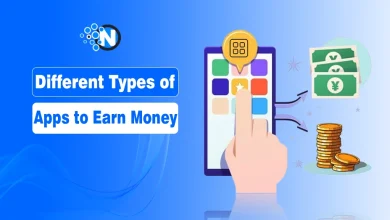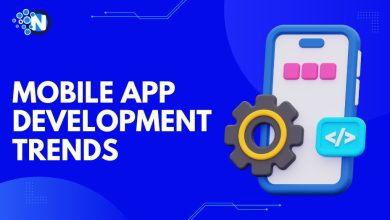Top 10 Best Language Learning Apps in 2025

Want to learn a new language in 2025? What’s better than language learning apps, as they allow you to learn the basics and even advance in other languages while sitting in your home.
Language learning apps are becoming increasingly popular due to their immense benefits and advantages. With time, smartphones have become the most accessible form of technology. You can carry out online shopping, remote-based work, and learn new skills.
And now, language apps dominate the market due to their convenience and interactive features. As there are many options available on the Internet, I have picked the top 10 and mentioned them in this guide that are worth using in 2025.
What are Language Learning Apps?
Start creating Verdict in seconds, and convert more of your visitors into leads.
Language learning apps are smartphone applications for Android and iOS users that allow you to learn different languages quite comfortably.
You don’t need to go outside your home to acquire the knowledge. Owing to the evolution and improvements in the interface, these apps now provide users with an enhanced experience.
The developers have catered these apps to a wide range of proficiency levels by uplifting the essential elements and highlighting their unique features. As a result, people of every age and every experience level can leverage their benefits.
Best Language Learning Apps in 2025
Start creating Verdict in seconds, and convert more of your visitors into leads.
Due to the increased demand and popularity, large numbers of applications have been created and launched into the market.
Some of them are entirely free, while others require a membership to work. However, not everyone can deliver the desired outcomes. I have developed this guide to help you learn about the best language learning apps in 2025.
1. Duolingo

Duolingo is one of the world’s most downloaded language learning apps. It teaches through fun, bite-sized lessons that feel like games. You earn points, build streaks, and unlock levels while learning words and grammar. Duolingo has recently added AI speaking practice and more languages. These aspects make it great for beginners and casual learners, as it’s free with optional premium upgrades.
Key Features
- Game-like lessons with XP and streaks
- AI-based speaking practice
- 40+ languages
- Daily personalized goals
- Interactive stories
| Pros | Cons |
| Fun and motivating | Not deep enough for serious learners |
| Easy for beginners | |
| Free to use | |
| Short lessons | |
| Huge user community |
2. Babbel

Babbel focuses on real-world conversations and grammar that actually help in daily life. Lessons are short but deep, with a strong structure built by language experts. It supports 14 major languages and includes live classes and review tools in 2025. Babbel is ideal for learners who want clear explanations and a guided path.
Key Features
- Expert-created lessons
- Speech recognition
- Grammar tips and examples
- Review sessions
- Progress tracking
| Pros | Cons |
| Practical content | Limited free access |
| Clear grammar breakdowns | |
| Structured course path | |
| Great for travelers | |
| Available offline |
3. Rosetta Stone

Thirdly, I have placed Rosetta Stone among the best language learning apps. The reason is it uses immersive learning, no English, just visuals, and native pronunciation. It has been around for years, but continues to grow with new tools like speech recognition and live tutors. Moreover, it is even better with offline access and flexible practice options for its 25+ languages.
Key Features
- Immersive image-based lessons
- TruAccent pronunciation tool
- Live tutoring
- Offline access
- Progress tracking
| Pros | Cons |
| Proven method | Subscription is expensive |
| Strong pronunciation focus | |
| Great for thinking in-language | |
| Clean, distraction-free design | |
| High-quality audio |
4. Memrise

If you want to speak like a native, Memrise is the best solution as it helps you with video clips of real speakers. It also features spaced repetition and fun games to lock in vocabulary. Now, Memrise possesses chatbot practice, grammar tips, and an expanded video library. Thus, it makes it perfect for learners who want real-world language in a casual format.
Key Features
- Native speaker video clips
- Memory games
- Chatbot conversations
- Spaced repetition flashcards
- 20+ languages
| Pros | Cons |
| Real accents and slang | Lacks in-depth grammar lessons |
| Entertaining design | |
| Great for vocab building | |
| Daily review system | |
| Easy to stay consistent |
5. Busuu

Busuu gives you lessons made by experts, plus feedback from native speakers. You get grammar help, vocabulary, and speaking practice. What I personally like about this tool is its AI-powered review tool that can adjust to your progress. Additionally, it also includes smart study plans and offline mode, which is best for structured learners who want real conversation support.
Key Features
- Lessons by experts
- Native speaker feedback
- Personalized study plan
- Grammar and vocabulary tools
- Offline support
| Pros | Cons |
| Real-world feedback | Only 12 language options |
| AI-enhanced reviews | |
| Balanced skill focus | |
| Community learning | |
| Well-designed interface |
6. LingQ

Maybe you are searching for a platform that is highly effective for learners who love reading and listening to real content on Android as well as iOS devices, like the iPhone 14 Pro Max. If yes, there is nothing better than LingQ. It offers news, books, podcasts, and even lets you import your own material. You highlight and save new words while reading. LingQ has expanded mobile tools and content for over 40 languages.
Key Features
- Real world content library
- Vocabulary highlighter
- Flashcard review system
- Personal content importer
- 40+ language support
| Pros | Cons |
| Perfect for advanced learners | Not ideal for total beginners |
| Learn from native materials | |
| Trackable word progress | |
| Huge content selection | |
| Flexible pace |
7. Pimsleur

Technology has expanded its dimensions to the educational sector as well, and Pimsleur is the best example in this regard. I have added it among the best language learning tools because it offers audio-first features, which are great for people on the go.
You can listen to 30-minute lessons that teach speaking, comprehension, and cultural context. Moreover, it includes speaking practice with voice recognition and more interactive tools.
Key Features
- Audio-based learning
- Voice recognition
- Daily 30-minute lessons
- Cultural learning
- 50+ languages
| Pros | Cons |
| Excellent for listening and speaking | Minimal focus on reading and writing |
| Can learn hands-free | |
| No screen time needed | |
| Builds long-term recall | |
| Quality native speaker audio |
8. HelloTalk

On your smartphones, you can install HelloTalk because it is a global language exchange app. You chat directly with native speakers through text, voice, or video. Furthermore, the built-in tools help with translation, grammar, and corrections.
In 2025, it has added live classes and interest groups. Also, it supports 150+ languages and is great for real-time practice and cultural learning.
Key Features
- Language exchange chat
- Voice and video messages
- Translation and correction tools
- Live classes and groups
- 150+ languages
| Pros | Cons |
| Real conversations | Not structured like a full course |
| Built-in corrections | |
| Connects global learners | |
| Fun social features | |
| Great for speaking practice |
9. Mondly

Mondly teaches you languages through daily lessons, grammar tools, and smart chatbots. It includes augmented reality (AR) and virtual reality (VR) features for an immersive learning experience. The developers have made it even more interactive with voice recognition and real-time conversations.
Key Features
- Speech recognition
- AR/VR learning tools
- Grammar helper
- Chat-based learning
- Daily lessons
| Pros | Cons |
| Engaging and immersive | Can feel repetitive |
| Easy to start | |
| Covers common phrases | |
| Beautiful design | |
| Quick daily practice |
10. Drops

Lastly, I have added Drops in this rundown on the best language learning tools in 2025. It not only teaches vocabulary visually by using games but also by fast-paced lessons. Sessions are just 5 minutes, perfect for busy learners. It is focused on practical words and topics like travel, food, and culture.
Key Features
- Visual learning interface
- 5-minute sessions
- Topic-based vocab lists
- Pronunciation audio
- Rare language support
| Pros | Cons |
| Fast and fun | Doesn’t teach grammar or full sentences |
| Very easy to use | |
| Great for busy schedules | |
| Focuses on real-world topics | |
| Supports unique languages |
Final Verdicts
Start creating Verdict in seconds, and convert more of your visitors into leads.
These are the top and best language learning apps to use in 2025. To sum up, these applications have become one of the most productive sources of education. Owing to their exceptional features, they have revolutionized how a person can acquire new languages. Above all, the developers have worked on integrating the gamified approach into the infrastructure of these platforms to offer personalized learning experiences.
Similarly, other techniques like mnemonic aids, real-time conversations with experts, real-world video content, and immersive picks help in diversifying learning preferences, which makes this procedure more accessible and enjoyable for all learners worldwide.




